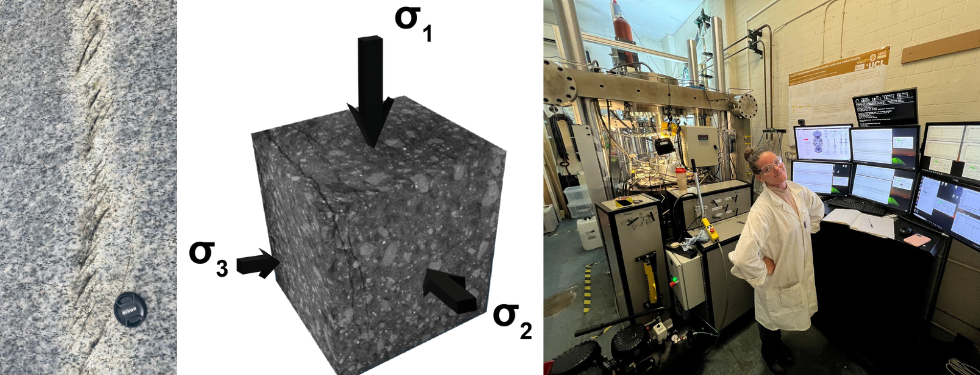Triaxial stresses, anisotropic damage, and directional fluid flow across scales - TRIFLOW

Title: TRIFLOW Triaxial stresses, anisotropic damage, and directional fluid flow across scales
Programme: HORIZON | Funded under HORIZON. 1.2. - Marie Skłodowska-Curie Actions (MSCA)
To fight climate change, Europe has set bold targets: net-zero greenhouse gas emissions by 2050 and 100 climate-neutral cities by 2030. A key part of reaching these goals involves injecting fluids deep underground—to safely store CO₂ and harness geothermal energy. But this process comes with serious risks, like groundwater contamination, CO₂ leaks, and man-made earthquakes.
To make fluid injection safer, there is a crucial need to understand how fluids move through fractured rocks underground. However, most experiments so far have only simulated simplified, two-dimensional stress conditions—very different from the complex, three-dimensional pressures deep in the Earth. This limits our ability to predict how fractures form and how fluids flow through them.
The TRIFLOW project aims to combine cutting-edge lab experiments using a novel experimental apparatus and 3D field mapping to explore how triaxial stresses shape fracture networks and direct fluid flow. Crucially, the project also tackles the challenge of "upscaling"—translating small-scale lab findings to the much larger scale of real-world reservoirs and nature.
TRIFLOW’s insights will help make underground fluid injection more predictable and much safer—supporting Europe’s climate goals and protecting communities and the environment.
The project TRIFLOW has received funding from the European Union's Horizon program under the European Research Council (grant agreement no. 101151119).





